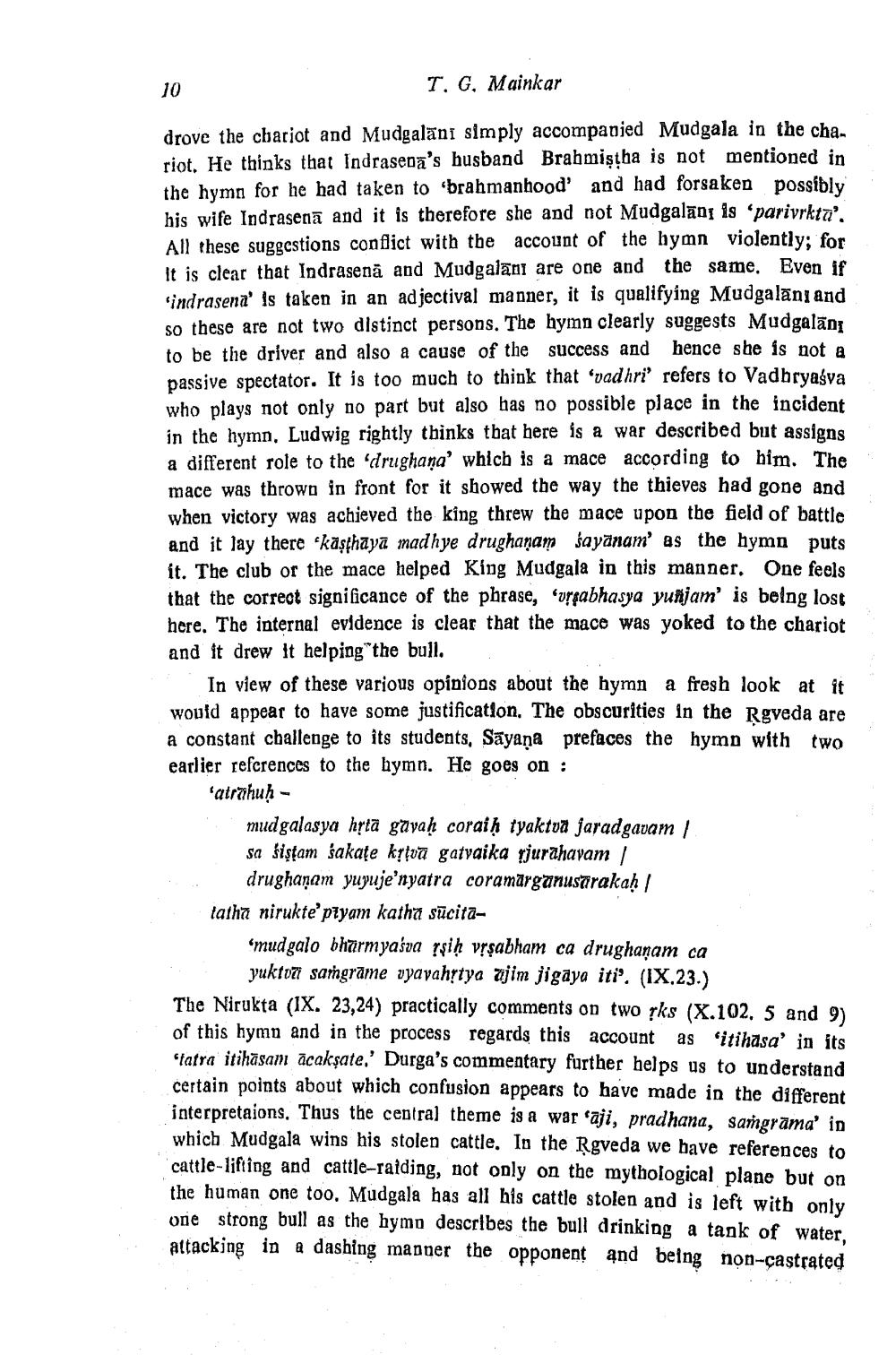________________
T. G, Mainkar
drove the chariot and Mudgalānı simply accompanied Mudgala in the cha riot. He thinks that Indrasena's husband Brahmiştha is not mentioned in the hymn for he had taken to brahmanhood' and had forsaken possibly his wife Indrasena and it is therefore she and not Mudgalan, is 'parivrkta”. All these suggestions conflict with the account of the hymn violently: for It is clear that Indrasenā and Mudgalānı are one and the same. Even if Sindrasena' is taken in an adjectival manner, it is qualifying Mudgalänı and so these are not two distinct persons. The hymn clearly suggests Mudgalādi to be the driver and also a cause of the success and hence she is not a passive spectator. It is too much to think that "vad hri' refers to Vadbryasva who plays not only no part but also has no possible place in the incident in the hymn. Ludwig rightly thinks that here is a war described but assigns a different role to the drughana' which is a mace according to him. The mace was thrown in front for it showed the way the thieves had gone and when victory was achieved the king threw the mace upon the field of battle and it lay there kasthaya madhye drughaṇam sayanam' as the hymn puts it. The club or the mace helped King Mudgala in this manner. One feels that the correct significance of the phrase, vrgabhasya yunjam' is being lost here. The internal evidence is clear that the mace was yoked to the chariot and it drew it helping the bull.
In view of these various opinions about the hymn a fresh look at it would appear to have some justification. The obscurities in the Rgveda are a constant challenge to its students, Sayana prefaces the hymn with two earlier references to the hymn. He goes on :
fatrahuh
mudgalasya hţta gāyah coraih tyaktva farad gavam / sa šiştam sakațe kļļva gatvaika rjurahavam |
drughanam yuyuje'nyatra coramärganusurakah / tatha nirukte' piyam katha sūcita
mud galo bhürmyaśva rşih vrşabham ca drughanam ca
yuktva samgrāme vyayahrtya ajim jigaya iti'. (IX.23.) The Nirukta (IX. 23,24) practically comments on two yks (X.102, 5 and 9) of this hymn and in the process regards this account as 'itihasa' in its statra itihasam acakșate.' Durga's commentary further helps us to understand certain points about which confusion appears to have made in the different interpretaions. Thus the central theme is a war raji, pradhana, sangrāma' in which Mudgala wins his stolen cattle. In the Rgveda we bave references to cattle-lifting and cattle-raiding, not only on the mythological plane but on the human one too. Mudgala has all his cattle stolen and is left with only one strong bull as the hymo describes the bull drinking a tank of water, attacking in a dashing manner the opponent and being non-castrated




